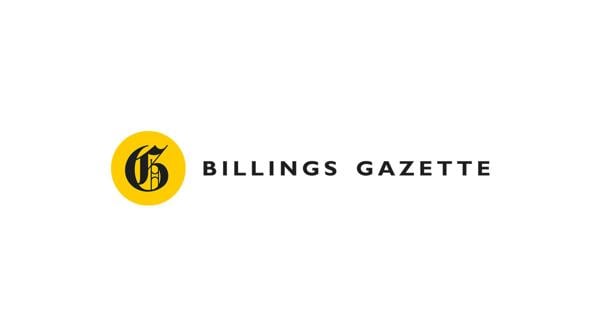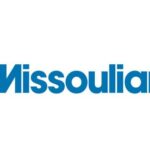Hi-Line farmers and ranchers between Havre and Malta may not have much of an irrigation season in 2025 for the first time in more than a century, the result of the massive mid-June failure of aging infrastructure used to increase and sustain water flows in the Milk River.
At a public meeting in Malta Tuesday night, U.S. Bureau of Reclamation officials told about 100 people in attendance and more than 50 watching online that the agency determined it would be impractical — financially and logistically — to implement a temporary fix for two failed steel siphon pipes near Babb that allowed the St. Mary Canal to plunge down a hillside, across the St. Mary River, up and over a smaller hill, and toward the upper Milk River to the east.
The canal and siphon are part of the Milk River Project, which diverts water from the St. Mary River on the east side of Glacier National Park and sends it instead into the Milk River, which spans the HiLine from Havre to Fort Peck. The siphon pipes failed June 17, hemorrhaging nearly 4,500 gallons a second and destroying the once grassy hillside they traversed. The failure broke the link that fed water from the St. Mary into the Milk for more than 100 years.
People are also reading…
The twisted remnants of the pipes are unusable, BOR officials said. And establishing a pumping system to push water from the St. Mary River over the hill that the siphons traversed would cost up to $3.06 million and deliver only a fraction of the water that once flowed through the siphons. A technical team including engineers and other specialists from BOR, the Blackfeet Nation, Milk River Project Joint Board of Control, Northwest Construction, Bureau of Indian Affairs and HDR engineering firm concluded after a late June site visit that such a system would be costly, complex and unreliable.
Instead, BOR officials are eyeing a $70 million permanent replacement of the siphons, and another aging siphon system at Halls Coulee.
“Due to the time and costs associated with a temporary solution that would deliver only a fraction of normal diversions, Reclamation has decided to focus all efforts on complete replacement of the St. Mary Canal siphon and Halls Coulee siphon as expeditiously as possible,” Ryan Newman, BOR’s Montana area manager, said in a statement Tuesday. He reiterated those remarks at the meeting that night.
Federal officials say there’s enough water in reservoirs to serve the thousands of Hi-Line residents whose towns’ municipal water systems rely on the Milk River.
This year’s irrigating season might look something like a bad drought year for farmers and ranchers. But next season could be catastrophic for agriculture and a broader regional economy stepping into a once unthinkable reality: Almost no irrigating season in 2025.
“Next year we’ll be entering unprecedented territory, something that we haven’t seen in more than 100 years,” Clayton Jordan, the BOR’s manager of Milk River reservoir and river operations, said. “It’d be just about a three-week season” for irrigation, from midMay to about June 7.
Irrigators served by the Milk River Project could normally count on an irrigation season from April through about mid-August, and in some years they weren’t cut off until September. This year, irrigation was paused June 25 to July 8, and irrigation water released from Fresno Reservoir northwest of Havre is expected to ramp down for good this season on July 31.
Farmers, ranchers, local officials and other residents across the swath of the Hi-Line reliant on the Milk River told the Missoulian in late June that next year’s near total lack of irrigation could spell disaster for farmers and ranchers, and the communities whose economies are built around them.
‘Armageddon’ for Montana HiLine farms without Milk River fix
A 2023 BOR study, part of an analysis of replacing the St. Mary diversion dam that feeds the canal, concluded that a failure of the canal system would cause severe and widespread impacts across the stretch of the Hi-Line that relies on the Milk River for irrigation. Economic impacts, the agency determined, would likely extend beyond farmers and also hurt local and regional businesses, families and broader economies.
The Milk River Project irrigates somewhere between about 120,000 and 180,000 acres across nearly 700 farms, according to varying figures from the project’s Joint Board of Control, made of irrigation districts the project serves; the BOR, which oversees and operates the infrastructure; and the Blackfeet Water Department. (Much of the project’s infrastructure, including the siphon, is located on the Blackfeet Reservation.) The project provides drinking water for 12,000 to 18,000 people, according to those agencies, including the city of Havre, home to about 9,000 people.
The Milk River ran dry six out of every 10 years before the completion of the Milk River Project, built from 1912-15, according to the BOR. The project is a series of aging canals like the St. Mary, reservoirs like Fresno, and siphons like the failed one in Babb that augment water flow in the river by taking water out of the St. Mary River and diverting it instead into the Milk River for both immediate use and seasonal storage.
The bolstered Milk River provides irrigation and drinking water for a roughly 160-mile stretch east of Havre. The project increased the amount of water available at a given time, extended the irrigating season and stored “carryover” water for future years. The project’s enhancements provide for about 60% of the water in the river during a normal year, according to the BOR, and up to 80% in drier years.
Chris Gomer, an engineer and the regional maintenance chief for the BOR, said Tuesday that a permanent fix would cost about $70 million. That would pay for replacing both the failed Babb siphon and the Halls Coulee siphon. New siphons would each comprise two 90-inch diameter siphon pipes set on the same alignment as the old pipes, but buried underground.
The agency’s goal, officials said, was to have the new siphons — and the whole canal system — operational again by Aug. 31, 2025. That wouldn’t help farmers much, but it would allow the BOR to draw down Fresno reservoir below its 17,000 acre-foot minimum for over-winter municipal water during the 2025 summer because September inflows from the repaired canal system would refill it before winter.
Irrigators who use water from the Milk River Project are collectively responsible for 73.96% of the St. Mary Canal system’s operation and maintenance costs under the terms of an early 1900s agreement that led to the system’s creation. The BOR picks up the rest of the tab. The arrangement has left the agency with barely enough money to perform patchwork repairs across a significantly dilapidated system, officials said.





